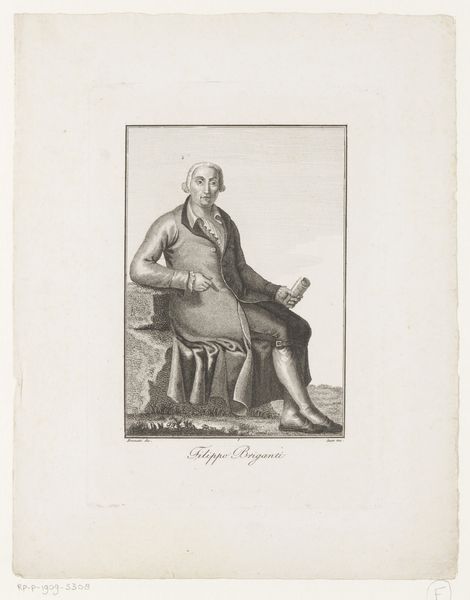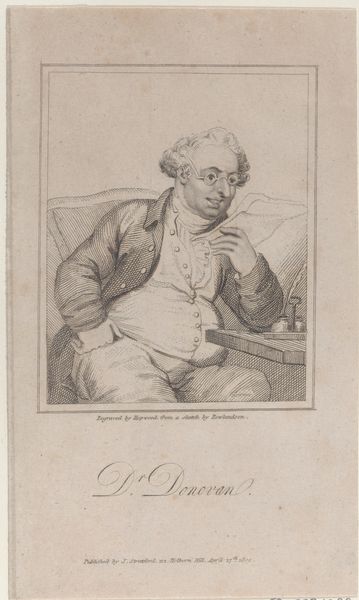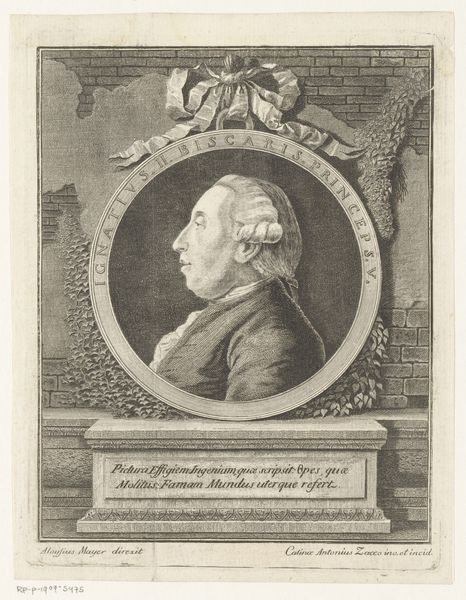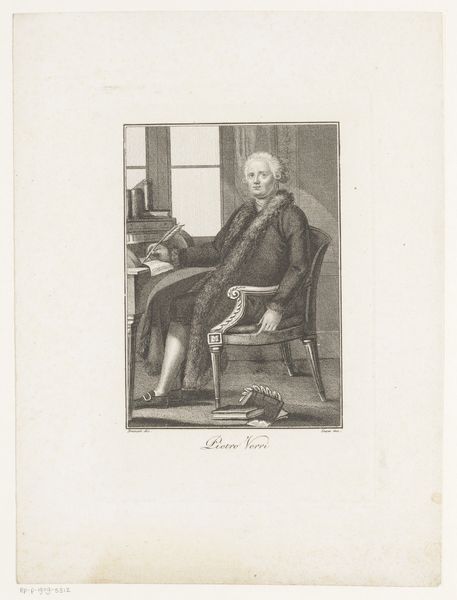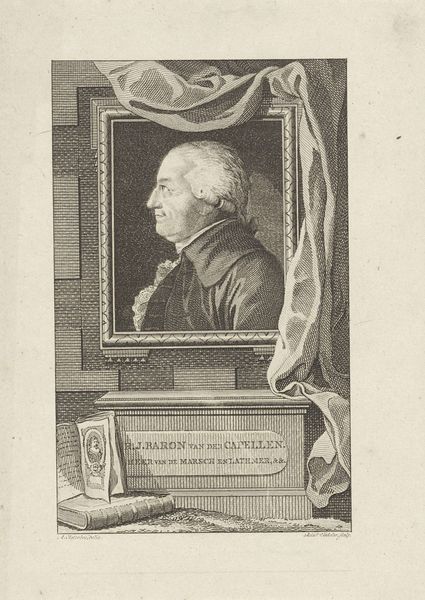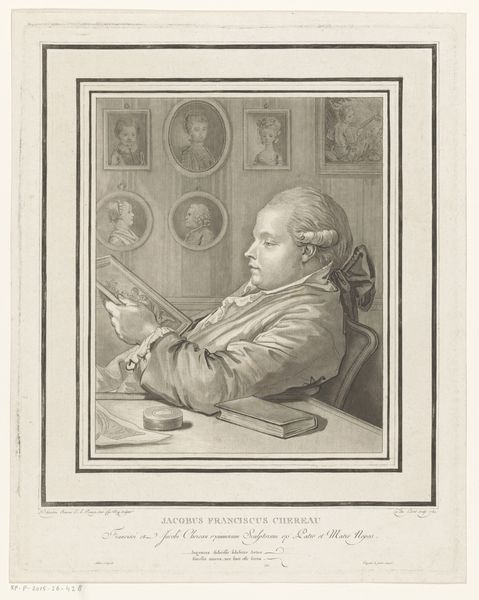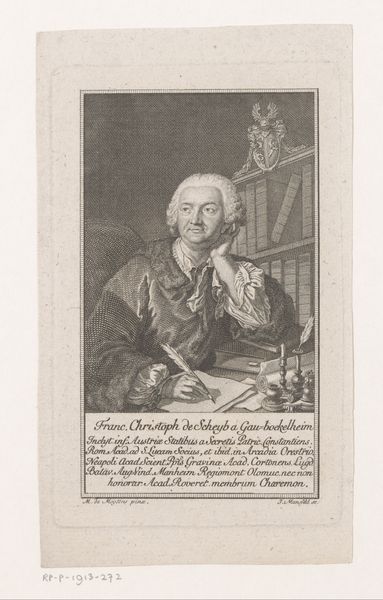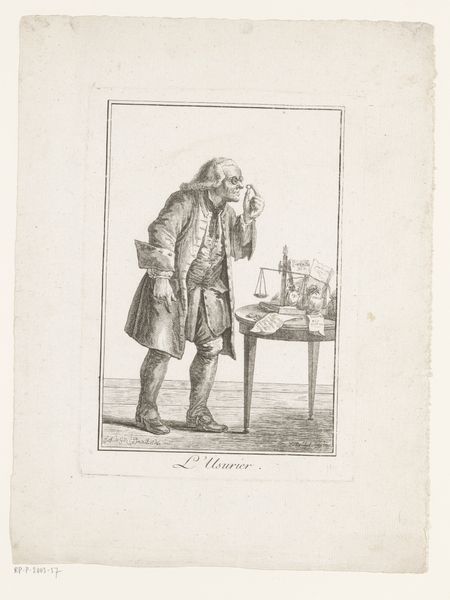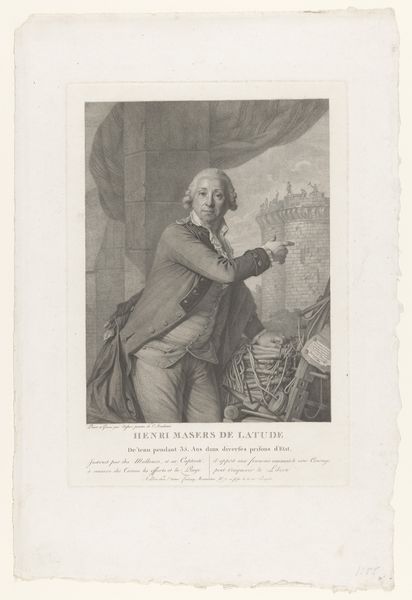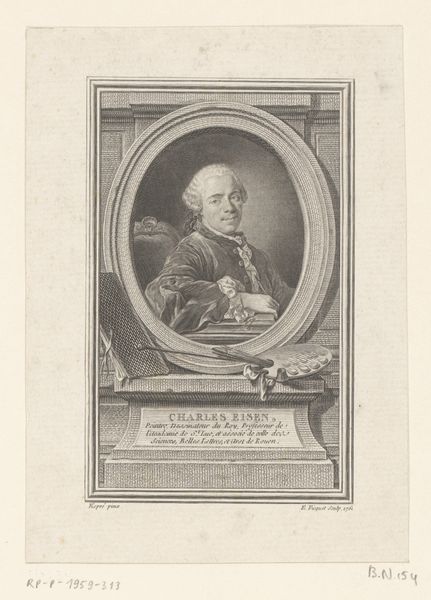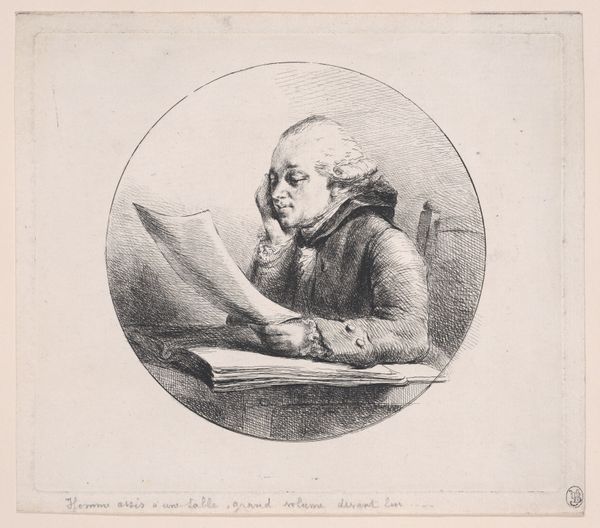
Dimensions: height 421 mm, width 287 mm
Copyright: Rijks Museum: Open Domain
Curator: Good morning. We are looking at an engraving from 1781 by Justus Chevillet, titled “Portret van Peter III van Portugal in zijn studiekamer” which translates to “Portrait of Peter III of Portugal in his study.” Editor: The first impression I have is one of melancholic intellectualism. There's a deep sense of thoughtfulness etched on his face, emphasized by his pose, with his head resting on his hand. He appears caught in contemplation. Curator: Indeed. This work provides a fascinating glimpse into the self-representation of a European monarch during the late 18th century, shaped by emerging trends of the Enlightenment. Observe the presence of both Baroque and Neoclassical styles, which mirror cultural and political trends in that era. Editor: Symbolically, the statue of Minerva, the Roman goddess of wisdom, next to him and the open books speak volumes about Peter III’s desired image: a learned ruler, influenced by reason. But look closely—behind him, almost like a backdrop, are faint depictions of pyramids. A curiosity perhaps, maybe implying exotic learning or ancient mysteries inspiring him. Curator: Exactly. The inclusion of the pyramids introduces the broader theme of expanding intellectual horizons that shaped Enlightenment thought. The depiction, likely taken from contemporary travelogues, suggests Portugal’s aspirations and engagements with global exploration and the era’s fascination with antiquity. Editor: I am struck by the phrase inscribed below the image, "Qui mores hominum multorum vidit et urbes” It suggests that Peter III identified with or wished to align himself with ideals of humanism, indicating a desire to portray his rule through the lens of wisdom and cultural appreciation, as if aligning himself with classical traditions of leadership. Curator: Absolutely. He wanted to be seen as a modern, learned monarch in touch with philosophical and cultural currents. The public display of learning and cultivation was important to political legitimacy during the late 18th Century, influencing public perception of leadership during a tumultuous period. Editor: This portrait presents such an interesting tableau of the man and the era, a mix of aspiration and symbolic pronouncements carefully arranged. Curator: Indeed, it offers rich insight into the political staging and self-construction during a transformational period of European history.
Comments
No comments
Be the first to comment and join the conversation on the ultimate creative platform.

